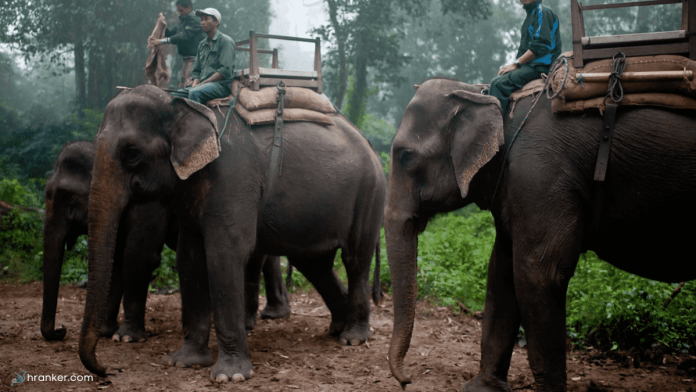Hello Everyone!
We welcome you to another informative blog on hranker.com.
In this blog, we will be talking about the report recently launched by WWF and UNEP on Human-Wildlife conflict and their need for coexistence. We will discuss in detail about the report, key points made in it and other facts.
What is the report all about?
A report titled ‘A Future for All – A Need for Human-Wildlife Coexistence’ was released by World Wildlife Fund for Nature (WWF) and United Nations Environment Programme (UNEP). It features contributions made by 155 experts from 40 organizations based in 27 countries. The report is an appeal to focus on the problem of human-wildlife conflict. The report aims to draw attention globally to the processes and solution to solve this conflict.
Before we learn about the facts made in the report let us first know about some important terms:
- What is Human-Wildlife Conflict (HWC)?
HWC refers to the struggles that arise when presence or behaviour of wildlife poses recurring threats to human interests or needs. This often leads to disagreements between a group of people and negative impact on both people and/or wildlife.
- Human-Wildlife coexistence
It refers to people and wildlife existing close to each other. The report describes coexistence as a dynamic state in which the interests and needs of both humans and wildlife are met. There may still be some impact on both but a level of tolerance is expected on the human side.
Causes behind the conflict
- Zoonoses and HWC – The COVID-19 pandemic is suspected to be a zoonotic disease originated in wild animals and then spread to people. It is driven by close interaction of people, their livestock and wildlife and unregulated consumption of wild animals. Due to close and frequent contact between animals and humans the chances of virus being spread from wildlife to humans increases.
- Lack of Protected Area – Only 9.67 percent of the world’s surface is covered by marine and terrestrial protected zones. Out of that about 40% of the African lion range and 70% of the African and Asian elephant ranges fall outside these protected areas. In India 35% tiger ranges lie outside protected areas.
- Increasing human population – As the population is increasing, requirements of people are also increasing. Several towns have sprouted near the edges of protected areas intruding on forest regions and exploiting them for their own gain
Global Impact of Human-wildlife conflict
Impact on Social Dynamics – HWC results in many societal responses which leads to disagreements. If wildlife is destroyed then conservation practitioners blame industry and if there is loss of people then they blame the government.
Impact on Wildlife and Ecosystem – Globally, 75% of the world’s wild cat species are affected due to conflict-related killing. People might kill them in defense which can lead to species involved in extinction.
Impact on commodity production and business – insects, weeds and pathogens leads to an average 40% loss annually in fields of South Asia and South Africa. Losses as a result of HWC negatively impacts profit margins of the companies that source products.
Human- Wildlife Coexistence – Solutions and opportunities
Opportunities to financial investment – investing in HWC management and coexistence programmes will ensure safety of communities as well as survival of wild species.
Moving from conflict to Coexistence – the aim should be to ensure the safety of both people and wildlife and to create mutual benefits of coexistence.
Impact on India
India is most affected by HWC because of being the world’s second largest human population as well as a large population of tigers, Asian elephants, Asiatic lions, one-horned rhinos and other species.
The data from the UNion Ministry of Environment, Forest and Climate Change indicated that over 500 elephants were killed between 2014-2015 and 2018-19 mainly due to human-elephant conflict.
During the same span of time, 2361 people were also killed in the conflict with elephants.
Initiatives taken by India
In 2017 National wildlife Action Plan 2017-2035 was launched focussing on managing HWC.
Empowering Gram Panchayats- utilization of funds of Pradhan mantri Fasal Bima Yojna for compensation.
The Standing Committee of National Board of Wildlife (SC-NBWL) approved the advisory for management of Human – Wildlife conflict in the country.
With this we come to the end of this blog. We covered all the major points stated in the report. We also mentioned some important terms for better understanding of the topic. We hope you find this blog informative and helpful.
Do share your views in the comments below!




